Don't wanna be here? Send us removal request.
Photo
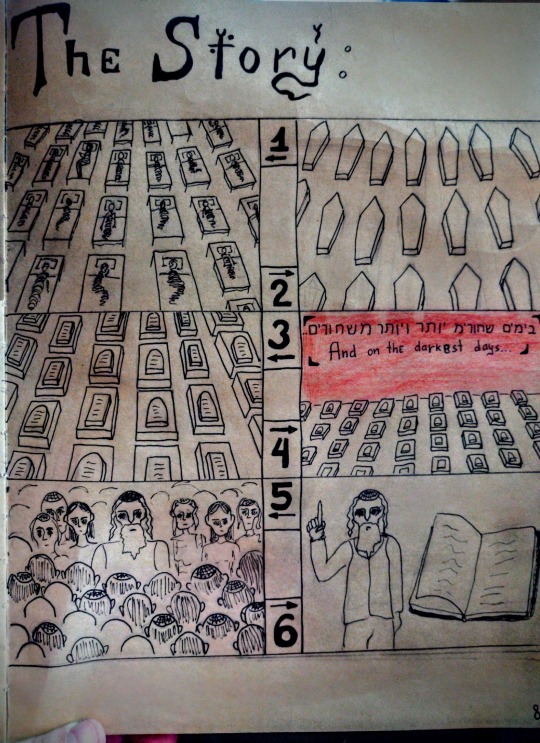
2 notes
·
View notes
Photo
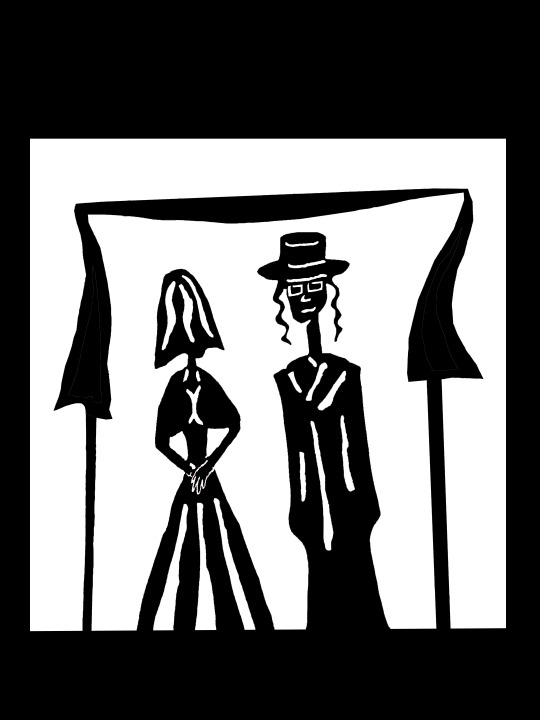



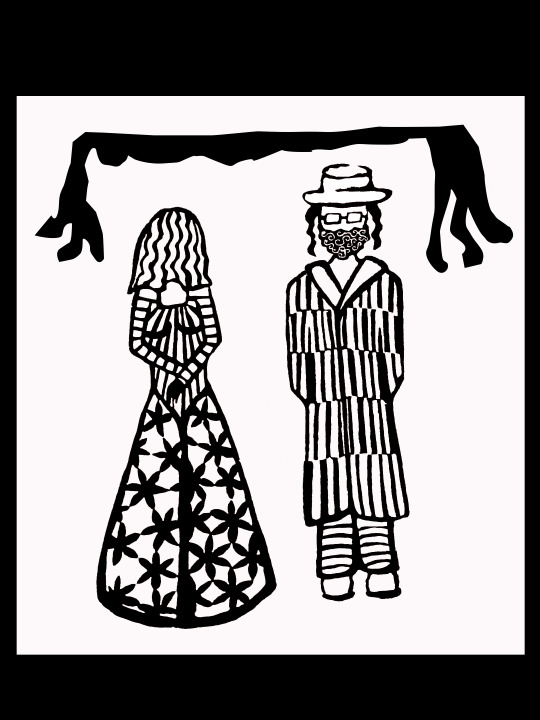
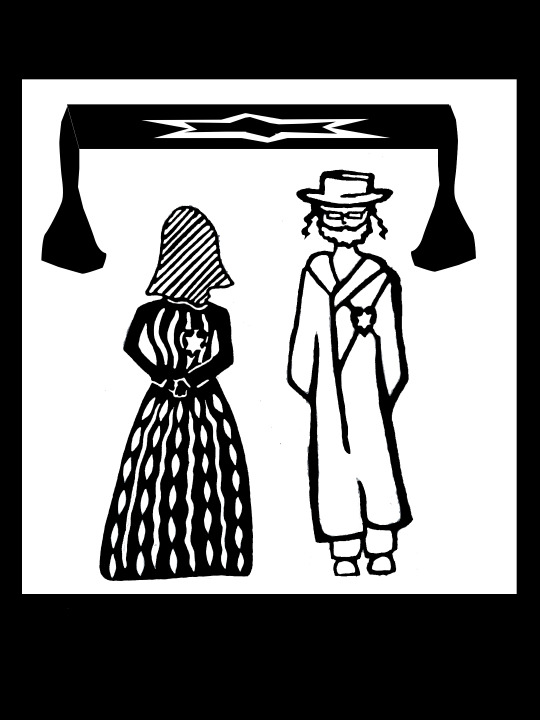
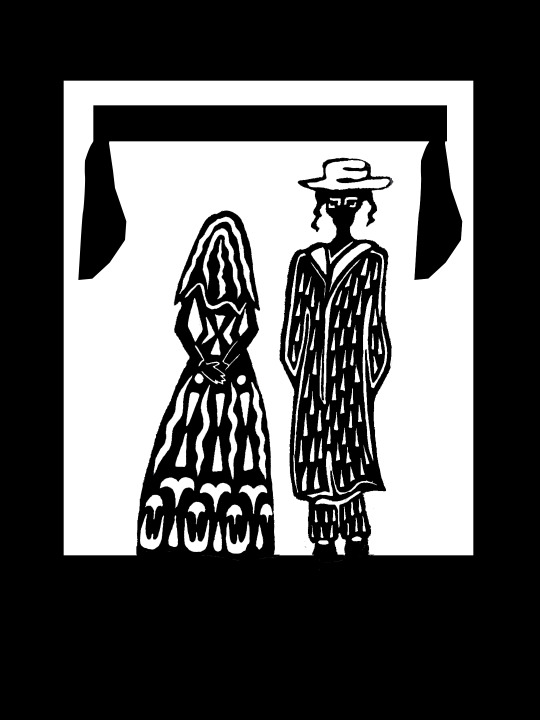
And these are already edited images with the "correct" colors. I also made a сhuppah everywhere so that not a single image would “win” due to additional elements. It remains to determine the style. What do you think is better?
0 notes
Photo
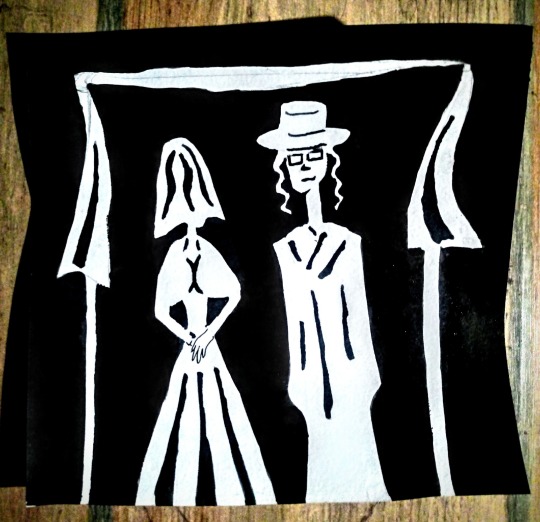
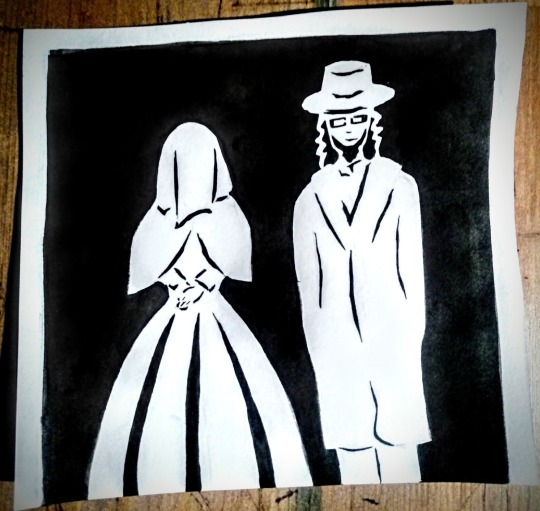
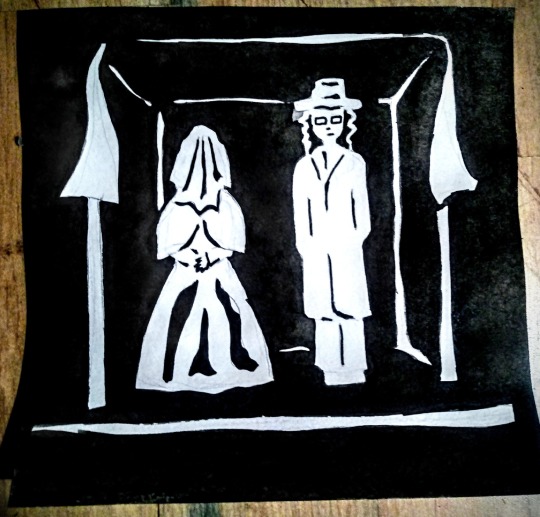
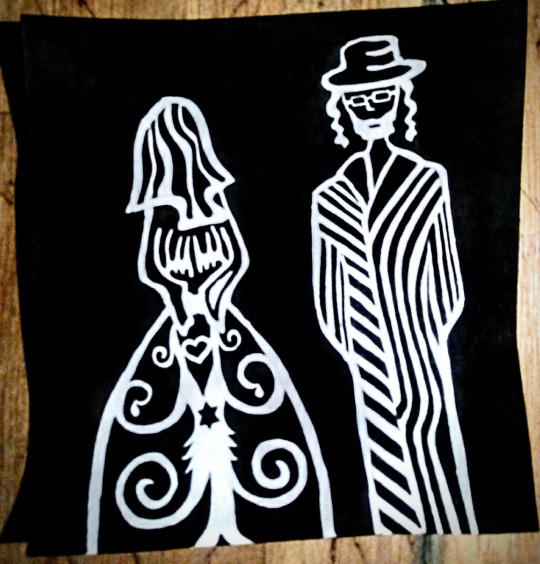

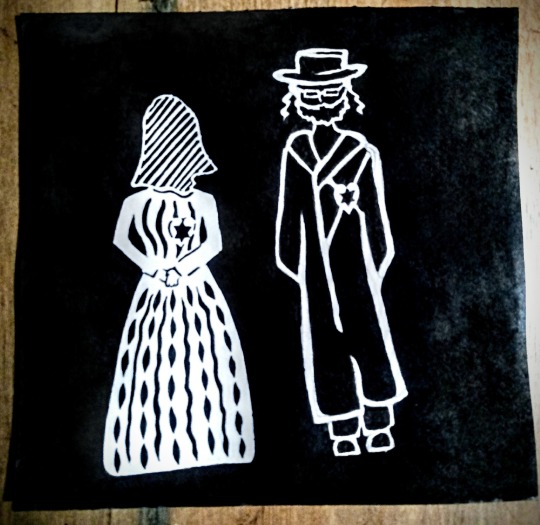


I did a larger and more detailed study of the first seven samples. But, since the very first attempt didn’t look very good, whereI tried to draw contours and silhouettes with large black lines, I decided to swap colors - turn the background black and the silhouettes themselves white. Of course, this is impossible with the technique of shadow theater, but it looks much more clearly for samples.
0 notes
Photo


First of all, I decided to make a few small sketch sketches with small changes in the style and various minor nuances - since I am going to do the work with the help of silhouettes, I need to decide on the general style. As the characters for the main tests, I chose the bride and groom as key characters that will be depicted a huge number of times one way or another.
0 notes
Photo
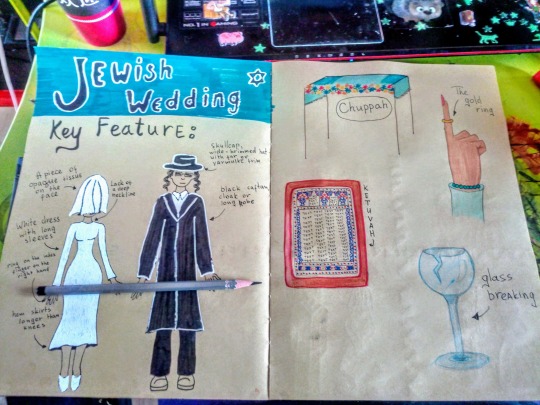
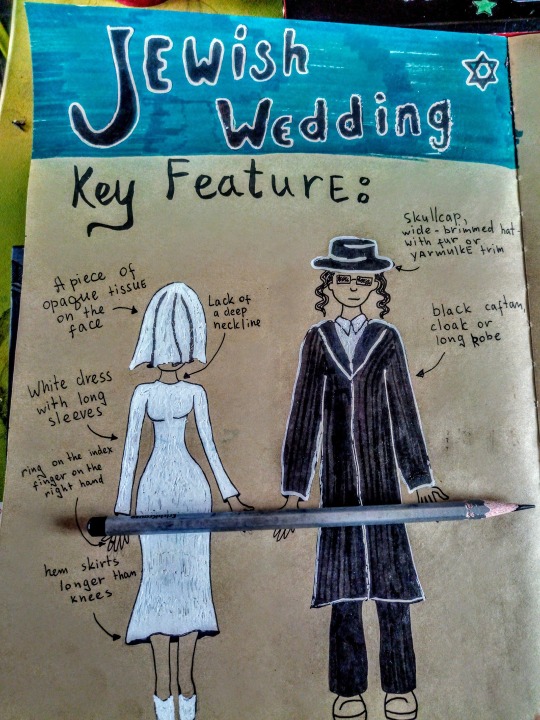
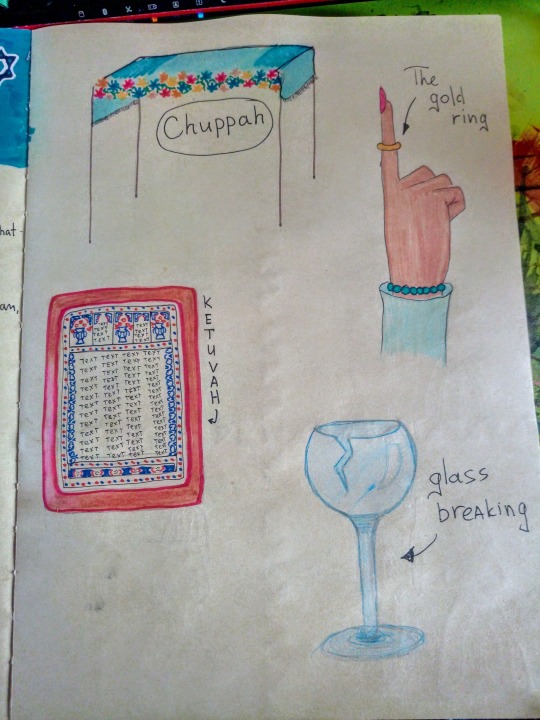
Here, I highlighted several key moments or pronounced features of an ordinary Jewish wedding, trying to depict them schematically, so that later I could rely on the original visual image. Maybe later I will add something else here.
1 note
·
View note
Photo

For this project, I want to explore the specific worldview of the Jews - how through the ancient ritual you can see the national attitude to life in the most unpleasant and gloomy periods of history and what, in their opinion, can save in this case. I am going to consider one of the most interesting rituals that were used very rarely in case of great ills - epidemics or major wars that threatened death for the whole community. An orphan wedding or “black chuppah” was made only if the whole community risked death - for help a wedding two poor orphans (or, from another source, people with disabilities) and fully paying for their celebrate, the community showed God that they could do good deeds, and they to demonstrated the angel of death that Jews can have fun and rejoice, regardless of external circumstances. It was believed that this would cause death to bypass them. This custom has many interesting features and nuances, but the main thing the fact that this ritual is Kabbalistic (one of the most mystical religious and philosophical teachings). I also like the combination of “happiest day” and the threat of death hanging over the community (which is inextricably linked to grief and fear).
0 notes
Text
Jewish wedding. Research.
Wedding for any religious Jew is almost the central event of life. In Jewish culture, the family is the cornerstone of Jewry, and the wedding is the biggest celebration.
The very first stage of a traditional Jewish marriage, is the Shidduch, or matchmaking. This means that the process of finding a partner is not haphazard or based on purely external aspects. Rather, a close friend or relative of the young man or woman, who knows someone that they feel may be a compatible partner, suggests that they meet. The purpose of the meeting is for the prospective bride and groom to determine if they are indeed compatible.
But most often used is the appeal to special matchmakers. They must be subtle enough psychologists in order to correctly combine young people and create a strong married couple. Potential bride and groom initially go on dates (usually a few, about 3 or 4) in cafes and parks. It is believed that going to the cinema, for example, is a very bad idea - for these dates, young people should discuss their views on life, wishes for each other, family life and other nuances of living together. In addition, they will have a whole life to “look one way”, so at these meetings they better look at each other. Despite the fact that divorces in Jewish culture have existed since ancient times, a strong family "for all life” is still considered the best option.
Some families sign a contract, the tenaim, meaning "conditions," that delineates the obligations of each side regarding the wedding and a final date for the wedding. Others do this at the wedding reception an hour or so before the marriage. This contract is ordained by Mishnaic law (circa 170 CE) and according to some authorities dates back to Biblical times. The Ketuvah, written in Aramaic, details the husband's obligations to his wife: food, clothing, dwelling and pleasure. It also creates a lien on all his property to pay her a sum of money and support should he divorce her, or predecease her. The document is signed by the groom and witnessed by two people, and has the standing of a legally binding agreement, that in many countries is enforceable by secular law.
I think, Perhaps this prenuptial agreement is one of the oldest existing prenuptial agreements in principle in the world. It describes the husband’s responsibilities towards his wife, and provides for the separation of rights and duties and prevents divorces due to petty family quarrels - at least because the husband will have to pay a considerable amount for the divorce. The main responsibilities of the husband, by the way, are: - feed his wife - provide his wife with clothes - support a family - satisfy the wife in bed Sex in general is an important point in family life. It is especially interesting that, unlike many other cultures, the pleasure of a woman is put quite high. Most often, the wedding ritual has almost the same sequence: 1. Signing of Ketuvah 2. Concealment of the face of the bride 3. Passage of the groom to the Chuppah 4. Passage of the bride to the Chuppah and her "bypass" of the groom 7 times 5. Putting the ring on the finger 6. Public reading of Ketuvah 7.7 Blessings 8. Glass breaking 9. The privacy of the bride and groom in the room 10. Triumph and fun Hiding the bride’s face under a piece of fabric has a different explanation, but the most common of them is the groom’s awareness that the past beauty is temporary and can end, and the inner beauty will remain. Also, in some interpretations, this may be a sign of the bride belonging to the groom. A wedding is of great importance not only as a celebration of the creation of a new unit of society. It is believed that when a soul appears in heaven, before being sent to earth, God divides it into two equal halves and sends it to the earth in different bodies. And when people get married, then the two halves of the soul are united together again. This legend seems to me very beautiful and symbolic.
The Chuppah is a decorated piece of cloth held aloft as a symbolic home for the new couple. It is usually held outside, under the stars, as a sign of the blessing given by G-d to the patriarch Abraham, that his children shall be "as the stars of the heavens."
When the bride arrives at the Chuppah she circles the groom seven times with her mother and future mother-in-law, while the groom continues to pray. This symbolizes the idea of the woman being a protective, surrounding light of the household, that illuminates it with understanding and love from within and protects it from harm from the outside.
Сhuppah (literally) is the awning under which the wedding ceremony takes place. Usually it looks like a piece of cloth that rests on four poles, but now it can be almost anything. In addition, "Chuppah" is called the entire ceremony that takes place under this canopy - that is, the entire official part of the holiday.
Another interesting point is that the groom under the chuppah is escorted by the fathers of the newlyweds, and the bride by their mothers. Parents hold candles in their hands that embody joy and light.
The number "7" also has its meaning - this is perfection and completeness. After the bride walks around the groom 7 times, she becomes on his right hand, which means that from that moment she becomes his main support in life.
No less interesting point, I think, is that the bride put the ring on the index finger of her right hand.
There are many rules in a Jewish wedding - for example, the bride’s wedding dress is described in great detail, although now even in religious weddings a minimal set of rules is used. The bride’s dress should not have deep cuts on the chest and on the back, should have closed shoulders (ideally a sleeve at least to the elbows), and the skirt should cover the knees. The groom should be in a black suit, tie and always with his head covered. He is allowed to wear a yarmulke or hat at the wedding. Snacks on the table should be at least 18, since in Hebrew this number is consonant with the word "live" and ect.
The blessings begin with praising G-d for His creation in general and creation of the human being and proceed with praise for the creation of the human as a "two part creature," woman and man. The blessings express the hope that the new couple will rejoice together forever as though they are the original couple, Adam and Eve in the Garden of Eden. The blessings also include a prayer that Jerusalem will be fully rebuilt and restored with the Temple in its midst and the Jewish people within her gates.
The verse, "If I forget thee O' Jerusalem, let my right hand forget its cunning: If I do not raise thee over my own joy, let my tongue cleave to the roof of my mouth", is sometimes recited at this point. With the breaking of the glass the band plays, and the guests usually break out into dancing and cries of "Mazaltov! Mazaltov!"
Another obligatory point of the holiday is connected with this - after 7 blessings, the groom breaks a glass glass with his foot. This is not quite part of the marriage ceremony, but a custom that symbolizes (according to one version) that a Jew should never be 100% happy. In any case, his joy should be at least slightly overshadowed by the general tragedy of the people in memory about the expulsion of Jews from Jerusalem and the destruction of the temple about 2000 years ago. Then the groom reads a prayer, and after the celebration continues again.
After chuppah, the newlyweds retire to a room where they must stay for at least eight minutes - this is considered the beginning of family life and gives them the opportunity to talk for the first time in the past week.
The fact is that a week before the wedding, they stop communicating - they are allotted time to reflect and understand whether they want this marriage. In the room they can talk for the first time as husband and wife.
The dancing, in accordance with Jewish religious rules requires a separation between men and women for reasons of modesty, and hence there is a Mechitzah, or partition between the men and women. The main focus of the dancing is to entertain and enhance the joy of the newlyweds, hence large circles are formed around the "king and queen," and different guests often perform in front of the seated couple. It is not unusual to see jugglers, fire eaters, and acrobats at a wedding (most of whom are guests, not professionals!)
It seems to me that Jewish weddings are very different from many other wedding rituals, which makes them look quite curious and unusual.
I think that in my project I will try to use the most vivid and exotic nuances of this holiday. For example, the "exaltation" of the newlyweds, dancing separately men and women, breaking the glass and other colorful moments.
Rabbi Mordechai Becher. The Jewish Wedding Ceremony [online]. [Accessed 23.03.2020] Available from: https://ohr.edu/1087
Zelensky Group. Chuppah - the Jewish Wedding Ceremony [online]. [Accessed 24.03.2020] Available from: https://www.youtube.com/watchtime_continue=1403&v=qiQ11G7_ZSw&feature=emb_logo
The host is Boris Stern.Producer - Igor Schneiderman. Jewish Encyclopedia. Jewish wedding. [online]. [Accessed 24.03.2020] Available from: https://www.youtube.com/watch?v=mgRumm1hZek
JEWISH WEDDINGS [online]. [Accessed 24.03.2020] Available from: https://www.bimbam.com/judaism-101/jewish-weddings/
1 note
·
View note
